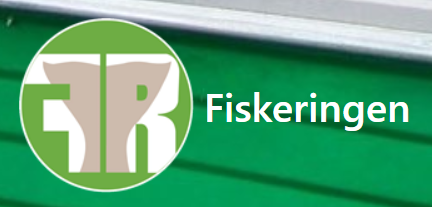NORTH SEA FISH STOCKS: GOOD AND BAD NEWS (Dansk resume: ICES anbefaler, at industrifiskeri efter tobis beskæres med 40% næste år. For rødspætter anbefales, at beskære kvoterne med 55%, For torsk anbefales en fangst på nul! Der er kun 46.000t torsk i Nordsøen, hvor der burde være tre gange så mange. Rødspætter er opgjort til 190.000 ton, hvilket er 40.000t for lidt. Tobis er anslået til 325.000t og hvilket er lidt halvdelen af det der burde være. Kulmulen (Biscayen) er opgjort til 10200 t, men burde være 35.000t. Kuller er opgjort til 460.000 – er godt over anbefalingen på 140.000t, men der er problemer med bifangt ved andet fiskeri og udsmid. On Friday, scientists from ICES will release a report giving further strong advice to the European Commission and governments to reduce fishing pressure. In particular, cod stocks in the North Sea, Irish Sea and west of Scotland are still depleted and ICES will advise zero catch of cod in these areas for 2005. But not all stocks are in such poor condition and the North Sea haddock stock is at its highest level for thirty years. COD Fish/Area Minimum recom- Estimated stock Status and mended stock size size in 2004 ICES Advice Cod – North Sea. 150 000 t 46 000 t Overfished – zero catch 2005 Cod – Irish Sea. 10 000 5 200 t Overfished – zero catch 2005 Cod – west of Scot 22 000 t Limited data Overfished – indicate stock zero catch 2005 remains at historical low level David Griffith, General Secretary of ICES said today; “There is still no clear sign that cod stocks in the North Sea, Irish Sea and west of Scotland are making a recovery. It also seems that fishing effort on these stocks is still too high. A further problem that scientists face is substantial under-reporting of catches of cod which makes it difficult to get a true picture of the state of these stocks”. Haddock – North Sea While the North Sea cod stock remains at low levels it is the opposite case for North Sea haddock. The haddock stock is estimated to be at 460 000 t which is well over the minimum recommended level of 140 000 t. However, because haddock are often caught together with cod in the same fisheries, ICES will advise that these fisheries must be managed in a way that avoids the by-catch and discarding of cod. Historically, the haddock stock has shown large variations due to the sporadic occurrence of a very strong recruitment of new young fish to the stock. In this case the good year was 1999 and fish of this generation continue to dominate the North Sea stock. However, since 1999 recruitment of haddock has been poor. Hake – southern Biscay and coast of Portugal The southern hake stock is estimated to be at a low of 10 200 t, while the minimum recommended level is 35 000 t. The southern hake stock declined sharply between 1982 and 1986 and it has continued to decrease to its current low levels. ICES will advise zero catch of hake from this stock in 2005. Plaice – North Sea The North Sea plaice stock is estimated to be at 190 000 t in 2004 – below the minimum recommended level of 230 000 t. ICES will advise that a 55% reduction in fishing effort could help the stock increase above 230 000 t by 2006. Sandeel The North Sea sandeel stock is estimated to have fallen to a historic low level of 325 000 t – because of poor recruitment – which is just over half the recommended minimum level of 600 000 t. ICES will advise that fishing effort in 2005 should be reduced to 40% of the 2003 level; ICES expects that this reduction will be required but advises that real-time monitoring of the fishery should be established to allow adjustments during the year. ICES will also advise that fisheries management should try to prevent local depletion of sandeel aggregations, particularly in areas where predators, which depend on them, congregate. Norway pout ICES will advise no fishing on this stock in 2005 due to the present low state of the stock and the low recruitment of young fish in recent years. Re-opening of the fishery should be based on clear evidence of improved recruitment, based on survey information. Fishers help scientists: again For the third year running, ICES advice on fish stocks will incorporate information provided by North Sea fishers on their perception of the status of key stocks such as cod. Representatives from the fishing industry and WWF also attended the meeting of the Advisory Committee on Fishery Management which produced the advice on fish stocks. What does it mean when a fish stock is below the minimum recommended levels? When a stock is below the minimum recommended levels it is being fished too hard, the fish are not being given enough chance to reproduce and the stock may not be as productive in the ecosystem as it should be. This does not necessarily mean that the stock will become extinct but it does mean that the current fishing pressure needs to be reduced to more sustainable levels. Kilde: Pressemeddelelse fra International Council for the Exploration of the Sea af 18. oktober 2004.

ICES anbefaler: Ingen torskefangst i nordsøen i 2005
Af: Kim Holm Boesen |
20/10/2004


